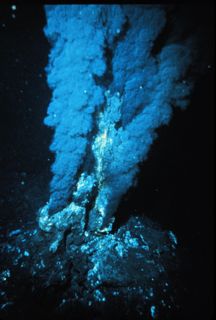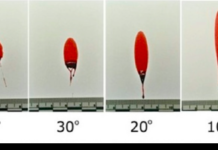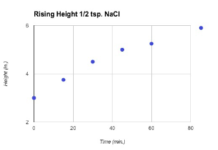Did you ever imagine that life could start at the very depths of the ocean floor? Some scientists hypothesize, with help from studies on “black smokers,” that underwater sea vents could be originators of life.
According to a 2007 report on livescience.com, geologists from Saint Louis University have discovered 1.43 billion-year-old fossils of deep-sea microbes next to fossils of sea vents. The new finding provides scientists with evidence that life may have started on the very bottom of the ocean floor.
Black smokers were discovered in 1977 as hydrothermal sea vents by scientists at the Scripps Institution of Oceanography. The initial black smoker found was located in the East Pacific Rise in the Pacific Ocean, near the Galápagos Islands. Underwater vents are also being discovered in the Atlantic Ocean and along the Pacific Antarctic Ridge. The Earth Institute at Columbia University says that the latest locations to search for sea vents is about 1,000 miles from the west coast of Antarctica, where geochemist Gisela Winckler thinks sea vents could be located. With help from her colleagues, they have pinpointed six spots on the remote Pacific Antarctic Ridge where they think sea vents could appear.
According to the scientists in the College of Earth, Ocean, and Environment at the University of Delaware, a hydrothermal vent is a geyser on the seafloor. A geyser on the seafloor would be similar to a spring; in this case it erupts periodically, ejecting a column of hot water and steam into the water above. These sea vents constantly discharge extremely-hot, mineral-rich water that helps sustain a varied population of organisms.
Some black smokers have chimney-like pinnacles, and are formed from suspended metals that precipitate out when the super-hot vent water meets the neighboring cold ocean water. The temperature of the water that comes out of the chimney of these vents surpasses 360 °C. Most black smokers are found to be at an average depth of about 2,100 meters in areas of seafloor spreading along the Mid-Ocean Ridge system. These black smokers are the hottest of vents, ejecting mainly iron and sulfide, thus making iron monosulfide. With this compound, the black color is produced, hence showing where the name came from.
"Most of the deep ocean is like a desert, but these vents are oases of life and weirdness," said Winckler. "The Pacific Antarctic ridge is one of the ridges we know least about."
“Wherever we look along the ridge, we find vents,” Christopher German said in a 2007 interview, “and the vents in different regions of the ocean host very different animals.” German, Chief Scientist of Deep Submergence at Woods Hole Oceanographic Institution in Massachusetts, conducts research on black smokers..
“Roughly 550 vent species have been discovered living in extreme temperature and pressure conditions, and new vent species are discovered at a rate of nearly two per month,”said Paul Tyler with the British National Oceanography Centre, Southampton.
Unique arrays of ecosystems are found around these underwater structures. People believed that all life on Earth sustained its energy from the sun; now that assumption is being challenged with proof of underwater creatures. Giant tubeworms, around eight feet tall take over most of the surrounding area, and clams cover the seafloor.
Creatures, such as eyeless shrimp and giant crabs, are also found around vents and get their food directly from black smokers. This is a process known as chemosynthesis. Bacteria in the water feed on noxious chemicals, and then smaller animals feed on these bacteria, and those smaller animals provide food for the larger animals. This creates a whole new ecosystem, separate from any other in the world of light, say experts.
These vents form on the seafloor, because in some regions along the Mid-Ocean Ridge, the colossal plates that form the Earth’s crust are spreading apart, constructing fractures and gaps in the bed of the seafloor. As seawater moves into openings, it becomes heated by magma that lies beneath Earth’s crust. As the water is boiling, it rises and looks for a path back out into the ocean through another opening; this creates the black smoker.
“I think that the idea that life originated from black smokers is a very plausible theory,” says Sam Berendzen, science instructor at Francis Howell High School. “However, we still need more evidence to resolve problems of the origin of life.”


This work is licensed under a Creative Commons Attribution-NonCommercial-NoDerivs 3.0 Unported License














Interesting article. I knew nothing about this phenomenon. Sea vents and black smokers are used interchangeably and the credibility for stating that life may have started at the bottom of the ocean is not documented as sufficiently as I would like.Lots of extraneous material and then back to creation of life.
I really enjoyed reading your article. It made me really gave me a better understanding. thank you for writing this article.
Very interesting information and thanks for dealing with the wonder of how life evolved over billions of years on our little planet. Science gives us the opportunity to actually figure out how systems evolve and grow into more complex organisms. Good work.
-‘ This article is different. Sea vents or black smokers have never came to my mind before. I guess because I didnt know they exhisted but now that I have read this article now I know!
:smile i love this article